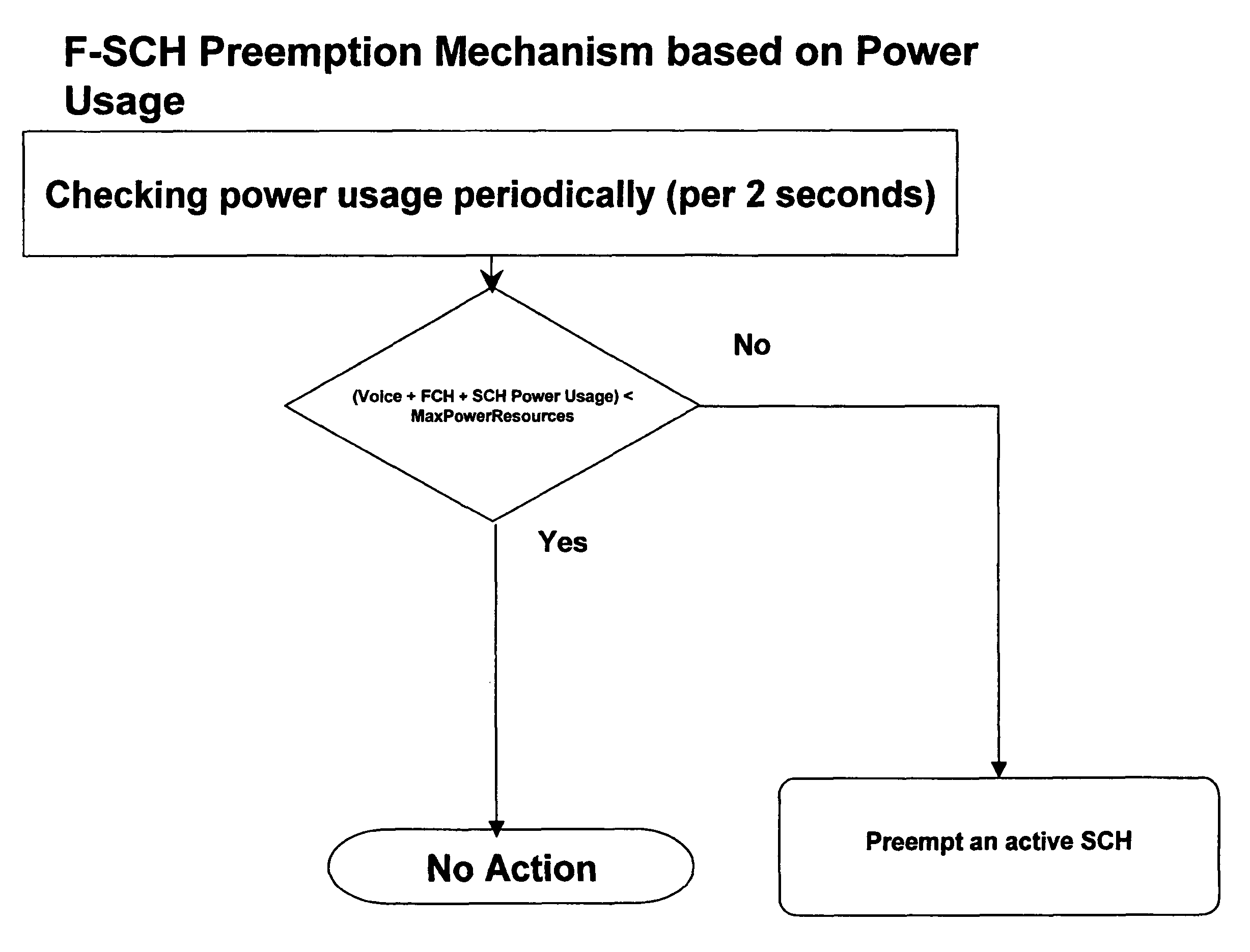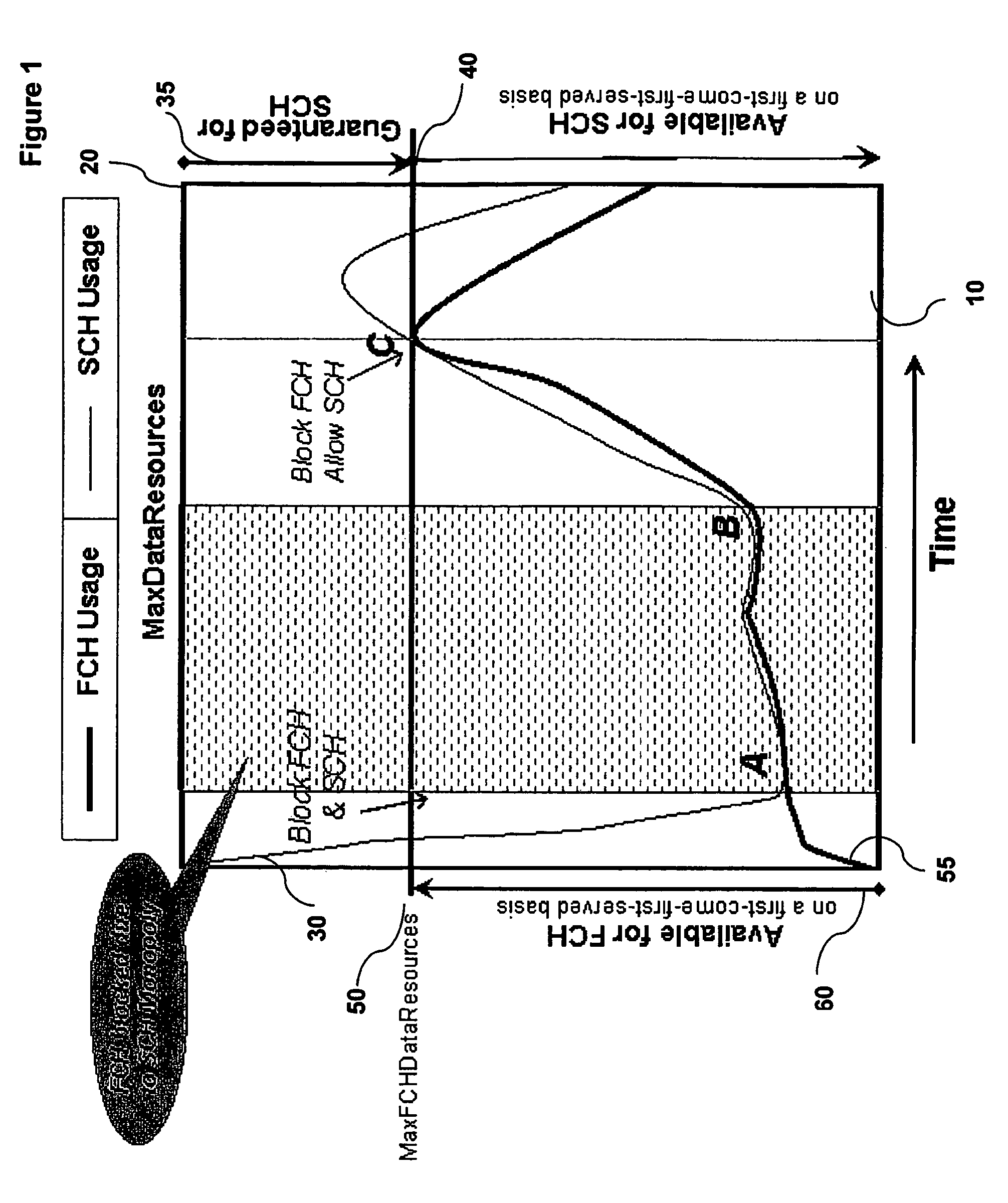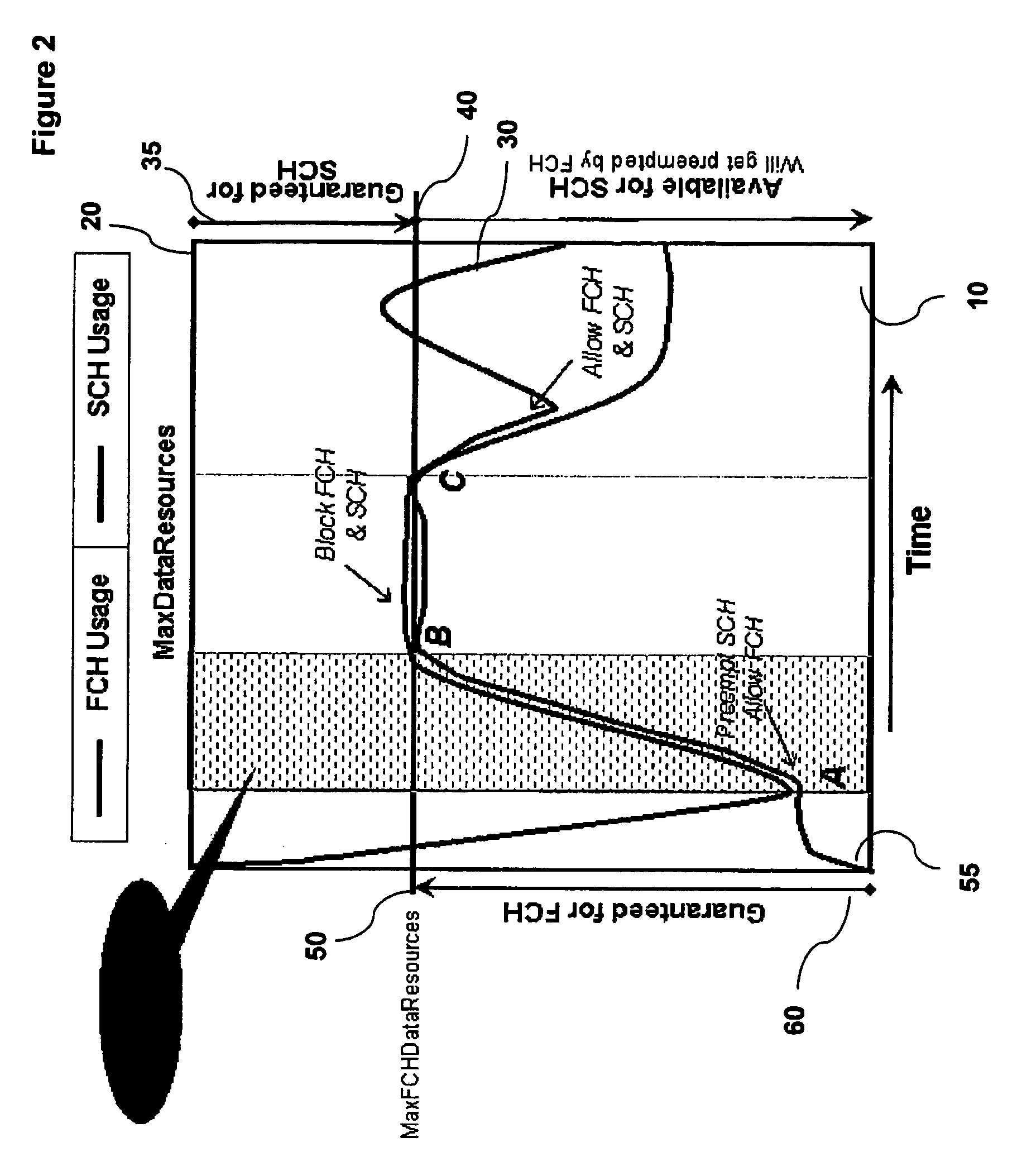Method and system of managing wireless resources
a wireless resource and wireless communication technology, applied in the field of wireless networks, can solve the problems of requiring large data transfers, affecting the quality of wireless communication services, and inherently variable demand for data resources, so as to reduce call blocking, reduce call blocking, and increase access
- Summary
- Abstract
- Description
- Claims
- Application Information
AI Technical Summary
Benefits of technology
Problems solved by technology
Method used
Image
Examples
Embodiment Construction
[0033]We will discuss preferred embodiments of the invention with reference to CDMA 1xRTT systems whose primary radio resources include Walsh Code (WC) and Power, and which utilize VC's, FCHs and SCHs. However, it should be appreciated that the invention is applicable to other types of systems which allocate resources to different services.
[0034]The forward radio resources, i.e. Walsh Code (WC) and Power, used by Voice and Data calls are partitioned by a Radio Resource Manager (RRM) at the BTS. A conventional RRM algorithm utilizes the following 3 user-configurable parameters to partition WC and Forward Power between voice and data calls.[0035]1. MaxVoiceResources—defines the upper limit for the resources available for Voice calls as a % of the total resources.[0036]2. MaxDataResources—defines the upper limit for the resources available for Data calls as a % of the total resources.[0037]3. MaxDataFCHResources—defines the upper limit for the resources available for Data Fundamental C...
PUM
 Login to View More
Login to View More Abstract
Description
Claims
Application Information
 Login to View More
Login to View More - R&D
- Intellectual Property
- Life Sciences
- Materials
- Tech Scout
- Unparalleled Data Quality
- Higher Quality Content
- 60% Fewer Hallucinations
Browse by: Latest US Patents, China's latest patents, Technical Efficacy Thesaurus, Application Domain, Technology Topic, Popular Technical Reports.
© 2025 PatSnap. All rights reserved.Legal|Privacy policy|Modern Slavery Act Transparency Statement|Sitemap|About US| Contact US: help@patsnap.com



